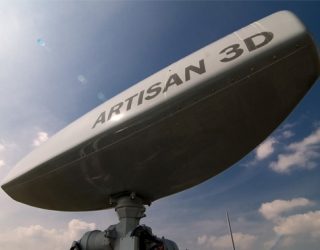Mar 8 2013
The Royal Navy has revealed a radar that can detect a an object the size of a tennis ball from 15 miles away, moving at three times the speed of sound (more than 2,000 MPH).
 Artisan 3D Radar System
Artisan 3D Radar System
British warships are now being kitted out with the sophisticated radar system, which can blast through interference equivalent of 10,000 inconsistent mobile phone signals and is five times more effective than any other existing radar used by the Royal Navy.
Developed for the Type 23 frigates, it can also monitor over 800 objects at the same time - from something as small as birds, to the biggest destroyers and aircraft carriers, all at a range of 200 to 200,000 metres.
Sophisticated Radar System
As part of a £100 million programme, the UK's new Queen Elizabeth Class aircraft carriers and amphibious vessels will be fitted with the new system that boasts an anti-jamming capability and supreme accuracy. The system is also being propositioned for the new Type 26 frigates that will begin service operation after 2020.
The warship will now have a nose above the rest in naval warfare when she returns to operation in 2014, as the first in her class to be kitted out with the new radar as an addition to her five-yearly refit in Portsmouth.
ARTISAN 3D
Rory Fisher, BAE Systems Maritime Services Managing Director said: "BAE Systems is playing a key role in helping the fleets of the future evolve to meet the ever-changing demands of the battlespace, creating technology solutions that are quicker, lighter, more resilient and easier to implement than ever before."
He added that the company is delighted by the successful ARTISAN installation on the frigate, marking an important milestone in the programme.
ARTISAN raises the bar in tracking accuracy and surveillance, which increases performance in various situations in surface and air defence, according to the manufacturer.
Even across environments that are densely polluted by interference and electronic noise, the radar system can still identify quicker and smaller targets.
Weighing less than 700kg, the radar is made from the same carbon glass fibre materials as Formula 1 racing cars.